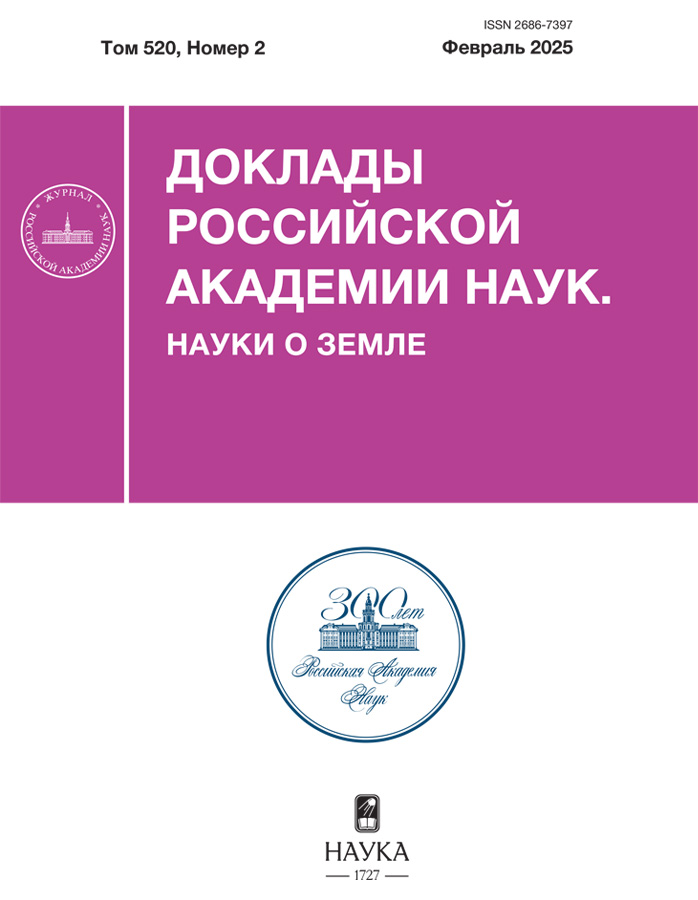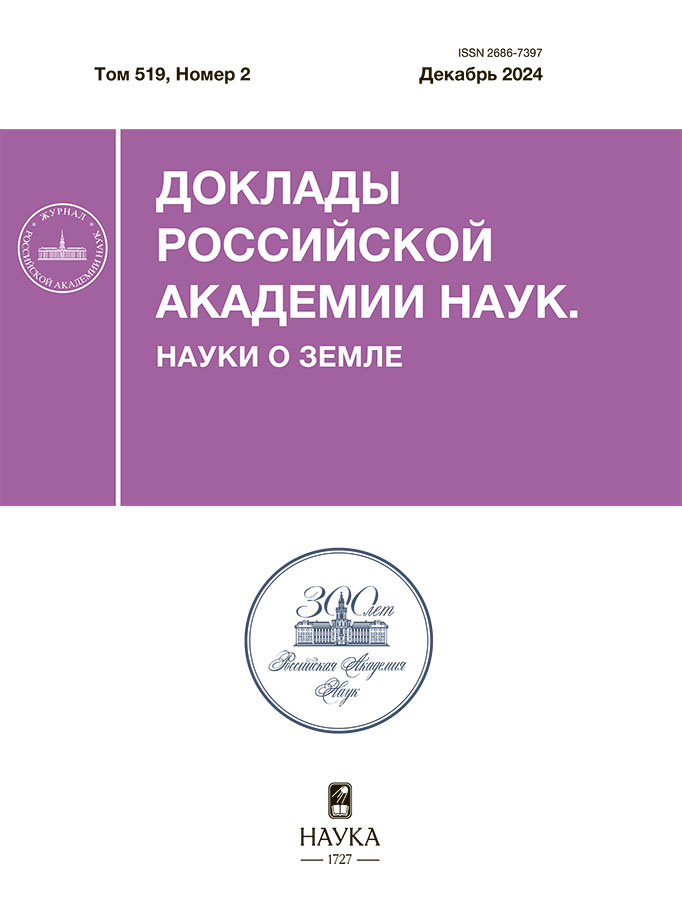Биогеохимическая адаптация метаболизма рыб к снижению антропогенной нагрузки на субарктическое оз. Имандра
- Авторы: Гашкина Н.А.1, Моисеенко Т.И.1
-
Учреждения:
- Институт геохимии и аналитической химии им. В.И. Вернадского Российской Академии наук
- Выпуск: Том 519, № 2 (2024)
- Страницы: 148-155
- Раздел: ГЕОБИОЛОГИЯ
- Статья получена: 04.06.2025
- Статья опубликована: 28.12.2024
- URL: https://snv63.ru/2686-7397/article/view/682461
- DOI: https://doi.org/10.31857/S2686739724120195
- ID: 682461
Цитировать
Полный текст
Аннотация
Рассмотрена биоаккумуляция элементов в органах и тканях сигов (Coregonus lavaretus L.) из различных по антропогенному влиянию плесов оз. Имандра в период снижения токсичной нагрузки. Показано, что аккумуляция элементов в органах и тканях сигов в меньшей мере зависит от концентраций в воде и в большей определяется толерантностью к более высоким концентрациям токсичных элементов и физиологическим состоянием. Построены модели перераспределения элементов в печени и почке сигов в зависимости от физиологического состояния рыб. Стратегия адаптивных ответов в наибольшей степени проявилась в изменения метаболизма железа и цинка.
Полный текст
Об авторах
Н. А. Гашкина
Институт геохимии и аналитической химии им. В.И. Вернадского Российской Академии наук
Автор, ответственный за переписку.
Email: ngashkina@gmail.com
Россия, Москва
Т. И. Моисеенко
Институт геохимии и аналитической химии им. В.И. Вернадского Российской Академии наук
Email: ngashkina@gmail.com
член-корреспондент РАН
Россия, МоскваСписок литературы
- Моисеенко Т. И., Даувальтер В. А, Лукин А. А., Кудрявцева Л. П., Ильящук Б. П., Ильящук Л. И., Сандимиров С. С., Каган Л. Я., Вандыш О. И., Шаров А. Н., Шарова Ю. Н., Королева И. Н. Антропогенные модификации экосистемы озера Имандра. М.: Наука, 2002. 476 с.
- Moiseenko T. I. Kudryavtseva L. P. Trace metals accumulation and fish pathologies in areas affected by mining and metallurgical enterprises in the Kola Region, Russia // Environ. Pollut. 2001. V. 114. P. 285–297.
- Моисеенко Т. И., Гашкина Н. А., Шаров А. Н., Вандыш О. И., Кудрявцева Л. П. Антропогенная трансформация арктической экосистемы озера Имандра: тенденции к востановлению после длительного периода загрязнения // Водные ресурсы. 2009. Т. 36 № 3. С. 312–325.
- Нормативы качества воды водных объектов рыбохозяйственного значения, в том числе нормативов предельно допустимых концентраций вредных веществ в водах водных объектов рыбохозяйственного значения. М.: ВНИРО, 2011. 257 с.
- Blanchard J., Grosell M. Copper toxicity across salinities from freshwater to seawater in the euryhaline fish Fundulus heteroclitus: is copper an ionoregulatory toxicant in high salinities? // Aquat. Toxicol. 2006. V. 80. P. 131–139.
- Niyogi S., Kent R., Wood C. M. Effects of water chemistry variables on gill binding and acute toxicity of cadmium in rainbow trout (Oncorhynchus mykiss): a biotic ligand model (BLM) approach // Comp. Biochem. Physiol. 2008. V. 148. 305–314.
- Fish Physiology: Homeostasis and Toxicology of Essential Metals / Eds. C. M. Wood, A. P. Farrell, C. J. Brauner. V. 31A. San Diego, USA: Academic Press, 2012. 520 p.
- Eid R., Arab N. T. T., Greenwood M. T. Iron mediated toxicity and programmed cell death: A review and a re-examination of existing paradigms // Biochim. Biophys. Acta. 2017. V. 1864. P. 399–430.
- Торшин И. Ю., Громова О. А. Экспертный анализ данных в молекулярной фармакологии. М.: МЦНМО, 2012. 747 с.
- Sharp P. The molecular basis of copper and iron interactions // Proc. Nutr. Soc. 2004. V. 63. P. 563–569.
- Гашкина Н. А. Эссенциальные элементы в органах и тканях рыб в зависимости от токсичности среды обитания и физиологического состояния // Геохимия. 2017. V. 55. C. 934–941.
- Fish Physiology: Homeostasis and Toxicology of Non-Essential Metals / Eds. C. M. Wood, A. P. Farrell, C. J. Brauner. V. 31B. San Diego, USA: Academic Press, 2012. 507 p.
- Lushchak V. I. Contaminant-induced oxidative stress in fish: a mechanistic approach // Fish Physiol. Biochem. 2016. V. 42. 711–747.
- da Silvaa A. O. F., Martineza C. B. R. Acute effects of cadmium on osmoregulation of the freshwater teleost Prochilodus lineatus: Enzymes activity and plasma ions // Aquat. Toxicol. 2014. V. 156. P. 161–168.
- Wang M., Wang Y., Zhang L., Wang J, Hong H., Wang D. Quantitative proteomic analysis reveals the mode-of-action for chronic mercury hepatotoxicity to marine medaka (Oryzias melastigma) // Aquat. Toxicol. 2013. V. 130–131. P. 123–131.
Дополнительные файлы












